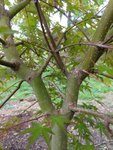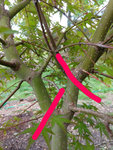BonjourBonsai
Chumono
I'd like to air layer a part of this Acer P. but I'm not sure where. Should I:
Any thoughts or ways to help me decide would be appreciated.




Thanks
- layer below the Y and make a double trunk,
- Layer the left or the right and leave the other, or
- Layer both above the Y
Any thoughts or ways to help me decide would be appreciated.




Thanks












